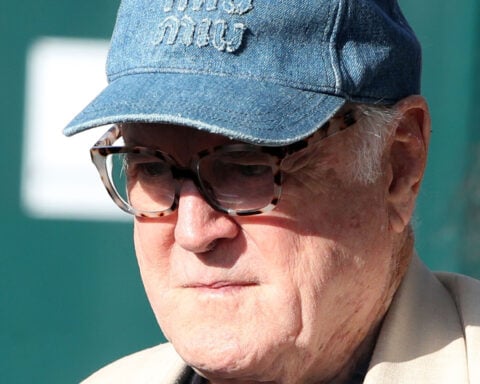A sleep technique gaining popularity on social media claims to help individuals fall asleep quickly, even in challenging environments like airplanes. The method, known as the Alpha bridge method, is thought to have been originally developed by the U.S. Navy for pilots who needed to sleep on command.
The technique has captured widespread attention through social media, particularly after psychologist Erica Terblanche's demonstration video accumulated 1.4 million views. Users have reported significant success with the method, with one commenting, "I was ready to toss and turn and spin around in my brain, and instead, I did this and was asleep immediately." Another user who struggles with insomnia reported achieving "the most solid 7 hrs I've had since menopause."
Dr. Shelby Harris, director of Sleep Health at Sleepopolis, explains the science behind the method. "It uses a series of eye movements combined with mental relaxation tactics that boost alpha brain wave activity," Harris said. "These waves are important in calming the mind and supporting the transition to sleep."
The method follows a specific sequence. Terblanche's video outlines the steps: users begin by getting comfortable, whether lying in bed or sitting on an airplane or train. They then close their eyes and count to 30, followed by partially opening them to create a "half moon" effect while counting to five. After repeating these steps, users close their eyes again and focus on slow breathing, inhaling and exhaling through the nose.
While many people report falling asleep during the first cycle, Terblanche advises against reaching for phones if immediate success isn't achieved. Instead, she recommends repeating the process several times if necessary.
Sleep experts suggest combining the method with other relaxation techniques for enhanced results. Harris recommends incorporating progressive muscle relaxation, mindfulness meditation, and visualization to ease the transition into sleep. The technique can be particularly helpful when paired with proper sleep hygiene practices, including maintaining a dark, cool, and quiet bedroom environment, avoiding heavy meals near bedtime, and turning off electronic devices at least an hour before sleep.
However, Chelsea Perry, a Massachusetts-based dental sleep medicine expert, notes potential limitations. "It could potentially lead to frustration or increased stress, counteracting the intended benefits," Perry told Forbes, particularly for individuals with anxiety disorders.
The method may not serve as a complete solution for those with sleep disorders such as insomnia or sleep apnea, who may require more specialized treatment plans. However, for individuals experiencing occasional sleep difficulties, experts suggest the Alpha bridge method can be an effective addition to their nighttime routine.

 Starbucks workers expand strike in US cities including New York
Starbucks workers expand strike in US cities including New York
 Isolated Chicago communities secure money for a coveted transit project before Trump takes office
Isolated Chicago communities secure money for a coveted transit project before Trump takes office
 Caitlin Clark effect hasn't reversed the decades-long decline in girls basketball participation
Caitlin Clark effect hasn't reversed the decades-long decline in girls basketball participation
 China says US is 'playing with fire' after latest military aid for Taiwan
China says US is 'playing with fire' after latest military aid for Taiwan
 Winter is hitting Gaza and many Palestinians have little protection from the cold
Winter is hitting Gaza and many Palestinians have little protection from the cold
 China calls Taiwan a 'red line', criticises new US military aid to island
China calls Taiwan a 'red line', criticises new US military aid to island
 Trump says he might demand Panama hand over canal
Trump says he might demand Panama hand over canal
 Howard throws 2 TD passes to Smith to help Ohio State rout Tennessee 42-17 in CFP
Howard throws 2 TD passes to Smith to help Ohio State rout Tennessee 42-17 in CFP
 JuJu Watkins and No. 7 USC hold off Paige Bueckers and fourth-ranked UConn 72-70
JuJu Watkins and No. 7 USC hold off Paige Bueckers and fourth-ranked UConn 72-70
 Discover the Alpha bridge method, a Navy-developed sleep technique gaining popularity on social media. Learn how this method can help you fall asleep quickly, even in challenging environments, and explore expert insights on its effectiveness and limitations.
Discover the Alpha bridge method, a Navy-developed sleep technique gaining popularity on social media. Learn how this method can help you fall asleep quickly, even in challenging environments, and explore expert insights on its effectiveness and limitations.







